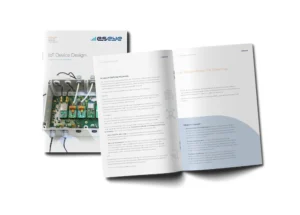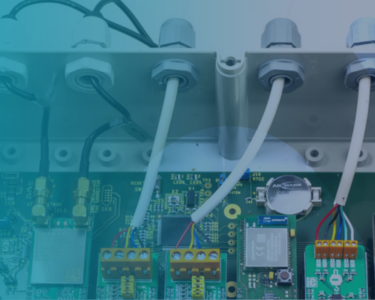

Introduction: Depend on
a reliable itinerary
The IoT delivers convenience and simplicity to consumers worldwide and spans all verticals, from payment systems and smart vending to EV charging, energy, and utilities. It also provides critical services in telematics and monitoring for diverse sectors, such as healthcare and telecare, smart buildings and cities, transportation, and infrastructure.
Eseye’s experience across a multitude of industries reveals that despite the simplicity IoT can deliver, designing and deploying a successful IoT project is far from simple. The technical challenges are complex and are often beyond the skill set of an organization’s IT specialists. Nearly 75% of IoT projects fail, often at the proof-of-concept stage.
Specialist knowledge is essential, particularly in a technology area that offers such diversity in provider choices. This challenge is compounded by market fragmentation, with numerous IoT solution providers offering niche specializations rather than end-to-end expertise.
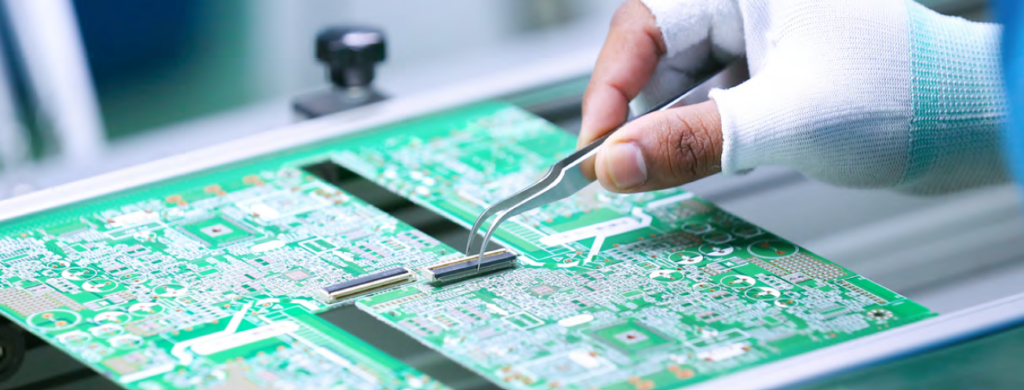
The Eseye difference
- Eseye provide services across the entire spectrum of IoT project development.
- We have delivered more than 500 unique IoT device design projects.
- We provide IoT cellular connectivity – near 100% availability – to more than 2,000 customers globally through deployments actively delivering data, commercial growth, and end user satisfaction
The devices that Eseye designs reach maturity—1,000 connections—in half the time achieved by most customers who design their own hardware.
We offer both device design and connectivity expertise, accelerating project progress across its entire trajectory, from conception to deployment—a combination rarely available from niche IoT solutions providers.
From concept idea through to a field-deployable working prototype in just 90 days..
From concept idea through to a field-deployable working prototype in just 90 days."
All aboard: Defining the journey
The Internet of Things is a universe of data. Your IoT device and its multitude of sensors is the critical point at which data arrives; where you can sift, shift, and extract it to make sense of real-time information relating to user interactions and machine performance, whatever the machine may be; driving value and delivering better outcomes. The device is basically your boarding card. It gets you in and on the journey.
Specify
When you’re in, the critical journey path is mapped by precise decisions about the type of data you want, the purpose you intend to put it to, and the locations (physical and geographic) where you plan to situate the device.
Such considerations are identified when you first assemble your business plan. They are informed by the objectives you set for your IoT project. They are the parameters for how the device will be designed. In this regard, they are the ‘theory’ behind your project.
Prototype
The practice – if and how the device will work in-field, deliver the data required, connect and stay connected to the internet wherever it is located, and require minimal physical intervention – depends on addressing every requirement at the prototyping stage.
Due to the intricate complexity of tying all these requirements together, this is the stage at which significant time lags often occur. The typical timeframe for prototyping runs to up to 18 months. That is more than enough time for two adverse factors to arise:
- The competitive advantage: A long development period allows an adequate time window for competitors to enter the market, depending on whether or not they arrived at this stage before you did.
- The pace of innovation: Technical innovation will continue to surge ahead – technology evolves unceasingly – with the possibility of rendering your own solution less than cutting-edge by the time it becomes operable. If your solution goes live with the need for an immediate upgrade, the prototyping stage has failed. You will have to revisit the prototype; more time, additional investment, and missed opportunities.
Test
The final step in the readiness process is testing. Once everything tells you it will work, you’ll need hard proof that it does. This is where you have the opportunity for final adjustments, clarity on and alignment of deliverables against objectives.
Then, and only then, the journey can begin.
IoT device design the Eseye way
Any IoT device is, by definition, IoT edge hardware. Its prime functions are to ensure connectivity and, through that connectivity, deliver data in real-time to cloud platforms; to disseminate, interpret, and act upon the insights the data carries.
The critical role of device design is to ensure the reliable, universal performance of these functions.
What’s in a device?
The foundation of IoT deployments: The device design is the pivot of IoT project success. More than just a physical object, it is an enabler of internet connectivity – through the wireless sensors, software, actuators, and other computer components embedded within it – for the exchange of data with other ‘things’ over the internet.
The data exchange point: The purpose of the IoT device is to be embedded within, for example, machinery or healthcare devices to capture data. Here is where one of the biggest design challenges arises; ensuring that the device will deliver upon the functionality and objectives required of it; that it will drive the desired outcomes.
The future-proof focus: These are outcomes that any IoT project owner needs to identify for the long term, not just the immediate deployment. Re-specifying post initial deployment can be costly, disruptive, and time-consuming; leading to lost opportunities at precisely the time when the opportunities need to be exploited.
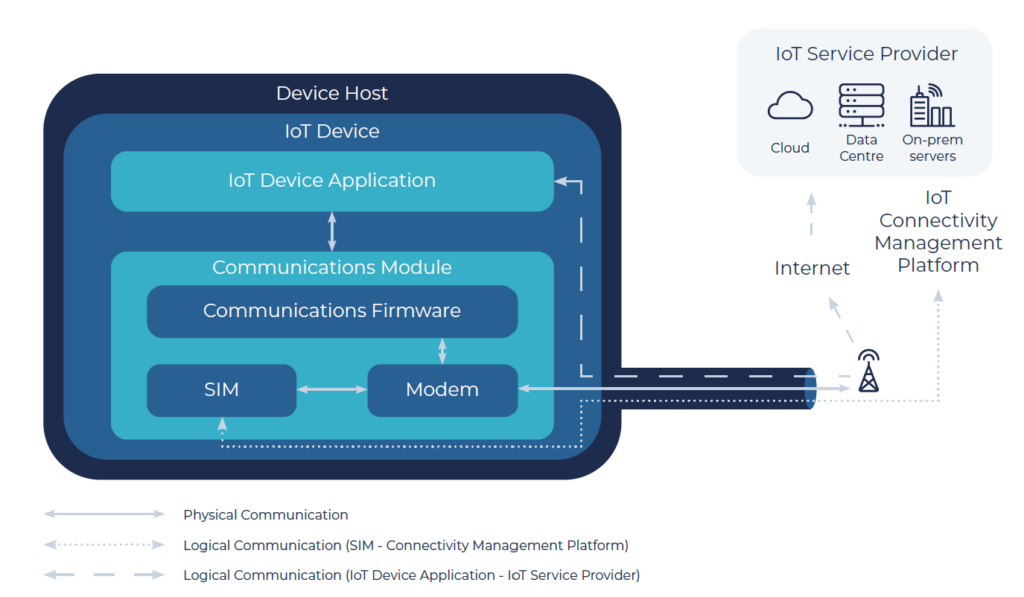
The device host is the equipment, machine, or gadget in which the IoT device is located. Examples include a connected car, smart meter, vending machine, or a tracker.
The IoT device is the equipment that performs the IoT operations, for example, making a drink in a vending machine or applying the brakes in a connected car. As well as the machinery or electronics to perform its tasks, the IoT device contains a number of components:
- The IoT device application controls how the device performs. It’s responsible for connectivity and data transfer with the IoT service provider system and responds to instructions received from the backend system.
- The communications module performs the connectivity for the device. Within the module:
- The communications firmware provides an API for the IoT device application to use to manage connections and data transfer. The firmware instructs the modem when to connect to the network.
- The modem (which includes the radio baseband chipset) performs the radio communications with the mobile networks. Modems can have the ability to connect to different types of network, both cellular (2G, 3G, LTE) and other types (such as Wi-Fi and Bluetooth). The modem connects to the network presented to it by the SIM.
- The SIM (UICC or eUICC) securely stores the subscriber, authentication, and network profile data. More sophisticated SIMs store multiple network profiles for improved coverage and resilience. They determine the preferred network for the modem to connect to depending on factors such as location and network quality. The SIM works with an IoT Connectivity Management Platform (CMP) to provide optimum connectivity for the device.
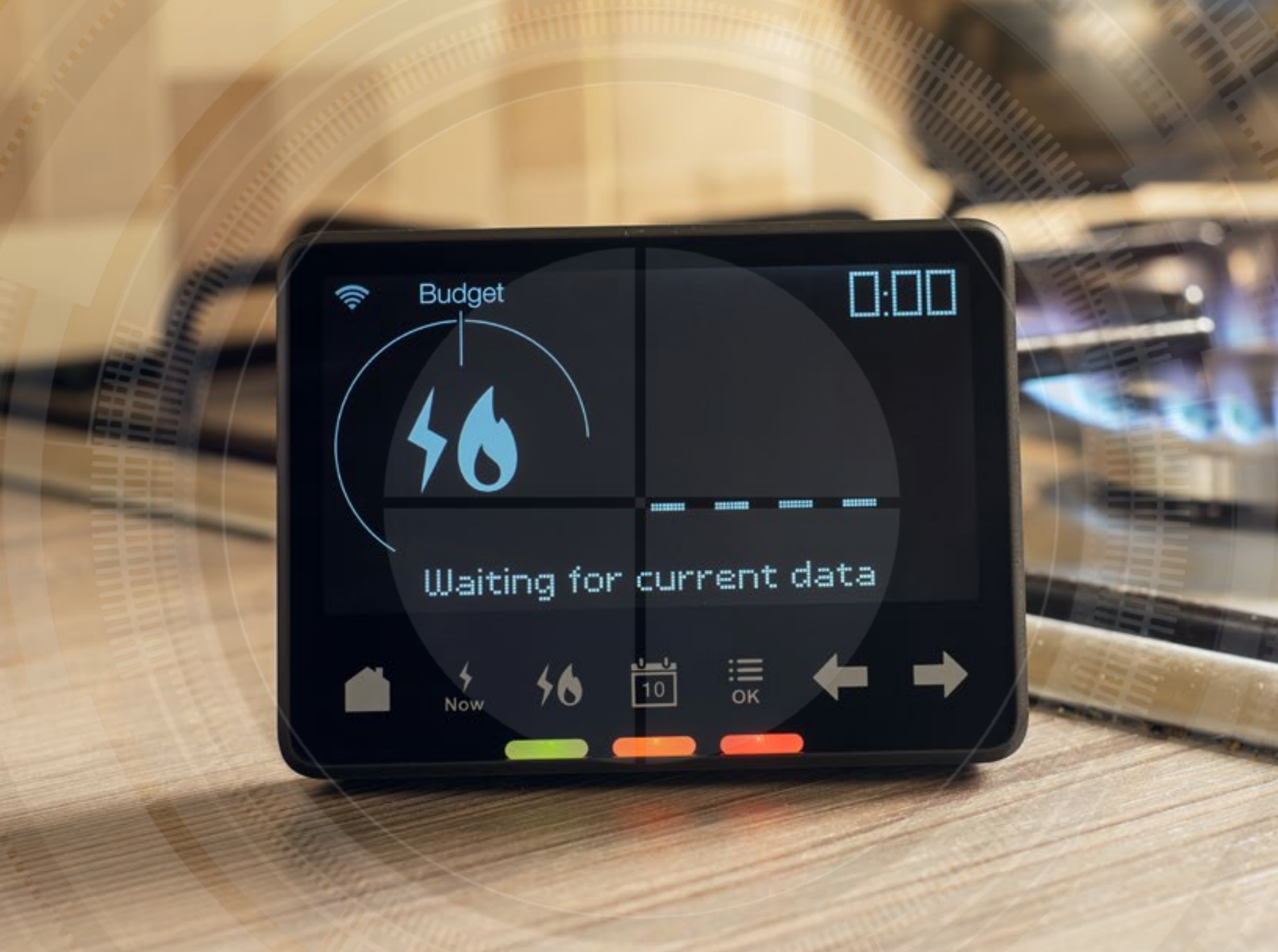
Make it fast
The first stage of the device design process is to make sure a definite process is in place; one that has been proven to work. Eseye offers an approach that has proved practical, appropriate, and progressive in multiple deployments across diverse use cases.
Eseye can design your IoT device and make sure it simplifies your global deployment. We believe the device can be considered a conduit; the point of both internet connectivity and ecosystem connection – an expanded and expanding world of access to other services:
Connectivity
This is why we approach device design not in isolation as a standalone project, but with a focus on optimum performance when the device is deployed in the field; performance that depends on connectivity – critical to factor in from day one of the design task.
Failure to connect is failure to perform. It costs money. It frustrates users. It erodes the promise you make to those to whom you deliver products, services, or monitoring information. The internet can be an unforgiving place for organisations who experience problems and, by inference, pass the problems along to their users.
Reliability
Our services extend beyond simply getting the hardware right. Our team of experts guide you through the extended device preparation cycle of which the design is merely the first stage – to prototyping, development, field trials, building, testing, certification, production, and deployment.
Scalability
We ensure scalability in how the device is designed, enabling swift and trouble-free rollout when the time is right. Using Eseye’s AnyNet+ SIM means a single, advanced, and intelligent eSIM and a single product SKU for optimised production and deployment timescales.
You’ll be able to access the world’s largest virtual mobile network, the AnyNet Federation, agnostic to over 700 available global networks; enabling you to achieve always-on localised IoT connectivity by connecting your devices across 190 countries.
We also build into the device the ability to self-monitor and self-heal. This avoids connectivity downtime, on-site maintenance visits, and the costs and lost opportunities of both.
Protocols
Eseye ensures your device is equipped with the protocols it will need for the long term (10-15 years or even longer), for example:
- Communications (GSM [2G, 3G, 4G, LTE, LTE Cat-M1], LPWAN [Sigfox, Lora, LTE-M, NB-IoT, ZigBee], LAN, Bluetooth, Wi-Fi)
- Connectivity infrastructure (6LowPAN, IPv4/IPv6, RPL)
- Data transmission (MQTT, CoAP, TCP/IP, UDP, HTTP, HTTPS)
- Device management (TR-069)
- Identification (EVC, IPv6)
- Telemetry, security (DTLS)
Certification
Eseye’s team of technical consultants understands the certification challenges for IoT and will ensure your device complies with standards and certifications.
Regulatory certification
Many countries and regions require electronics products to comply with regulatory standards before the products can be sold in specific markets.
These standards cover aspects such as electrical safety, RF emissions interference, electromagnetic compatibility, and environmental factors.
Examples of regulations include:
- China Compulsory Certification (CCC)
- Electromagnetic Compatibility (EMC) Directive 2014/30/EU and Radio Equipment Directive (RED) 2014/53/EU
- Federal Communications Commission (FCC) Part 18
- Gijyutsu Kijyun Tekigō Shōmei (Giteki)
- Network Access License (NAL)
An IoT device may need multiple regulatory certifications depending on the markets and geographies in which the device will be used.
Eseye’s team of technical consultants understands the certification challenges for IoT and will ensure your device complies with standards and certifications."
Industry certification
Different industries may require products to conform to specific standards for each industry. The telecoms industry has two main certification schemes for mobile devices, which are based on 3GPP standards, SIM functionality, and antenna performance. Network operators often require one of these certification schemes to be obtained as part of their acceptance or certification requirements:
- Global Certification Forum (GCF) is a worldwide, voluntary scheme that uses self-declaration with a quality assurance and certification challenge process. Devices without certification may be blocked from connecting to GCF members’ networks.
- PTCRB is mainly used in North America and is mandatory for devices using PTCRB members’ networks. Devices without this certification may be blocked. Each PTCRB certification is verified with tests executed at PTCRB-approved labs.
- Vertical industries, such as automotive and medical, may have additional certification schemes that apply to IoT devices that may operate in their target markets. They can cover end-user safety and other specific requirements, such as extreme operating temperatures and vibrations.
Operator certification
Some mobile network operators use their own testing and certification schemes, which may be in addition to industry certification.
Operator schemes ensure device interoperability specific to their network configuration and network parameter settings. They can test in-field performance, such as radio sensitivity, dropped connection rate, handover success, data throughput, and battery life. Testing of devices using newer technologies, such as LTE-M, NB-IoT, and 5G, can be used to ensure the devices are customized properly to benefit from the specific network configurations required.
Operators use their own certification schemes to minimise connectivity issues and ensure that devices on their network do not have an adverse impact on the network or other users. They typically perform rigorous testing on white-labeled devices to ensure the devices work as intended and do not create ongoing issues for customer support teams.
Note on roaming
Operator certification is often only needed on the local (home) network and not for any networks that the devices may roam onto. However, roaming has other pitfalls for IoT devices, and it’s better to ensure devices are not reliant on permanent roaming.
Read about how to resolve permanent roaming issues.
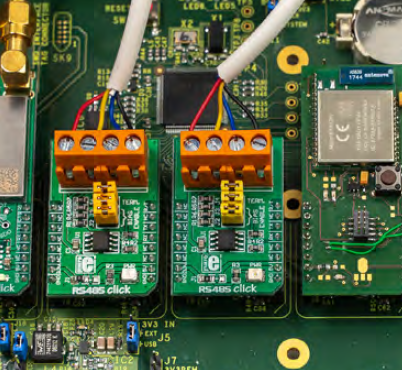
The Eseye device design promise
Eseye offers specialist knowledge across the complete spectrum of the device design process. The immediate benefit of this holistic capability is to relieve you of the complexity of dealing with multiple vendors and having to project manage precise and sensitive coordination between parties to get every detail right as the design process passes from one phase to the next:
- From concept idea to a field-deployable working prototype in just 90 days, we’ll put your theory to the test with the Hera 300, Rapid IoT Edge architecture development.
- For streamlined deployment, we will ensure out-of-the-box zero-touch secure global connectivity, seamlessly integrated with AWS IoT Core, through Eseye’s Intelligent Cloud Connect.
- When you launch, you will be confident that your solution works; that your device will function first time out and then into the future, and that it is designed as a single stock-keeping unit (SKU) to simplify global deployment through the Eseye AnyNet+ eSIM, providing any network connectivity, anywhere, all the time.
- You’ll benefit from real-time, automated monitoring and complete control of your IoT estate’s connectivity through our single application Connectivity Management Platform (CMP).
- Across your entire estate, you’ll be assured of resilient worldwide cellular connectivity with our edge processing hardware, the Hera 604 router..
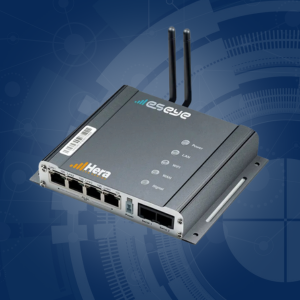
Eseye Hera 300 Rapid IoT Edge architecture development (RAPIER)
Our rapid IoT edge prototyping solution accelerates IoT device design, testing, production, and deployment. The Eseye process reduces IoT device development time to under 3 months, from the industry 12-month average. Not only does this acceleration get you to market faster, it also ensures that costs stay under control. Without an experienced team on your project, costs can escalate in direct proportion to the amount of time needed at the development stage.
Our RAPIER process has been proven effective time and time again, through over 500 customer IoT projects, to drive successful implementation:
• Delivering enterprise-scale, global IoT solutions
• Significantly reducing investment costs
• Accelerating product time-to-market
• Mitigating IoT project risks
Eseye enables the rapid build and deployment of IoT devices, based on our Hera 300 platform.
DEFINE → DESIGN → REFINE → DEPLOY
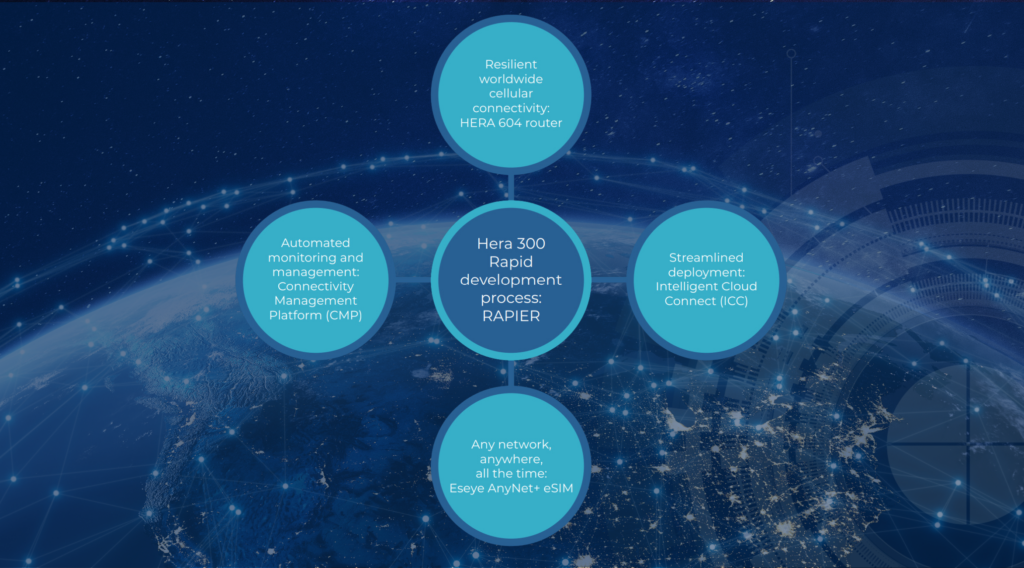
Define
Through the first-stage discovery process we develop a deep appreciation of your business concept. We proceed with agile delivery methodology to facilitate collaboration with your stakeholders and specialists at every step:
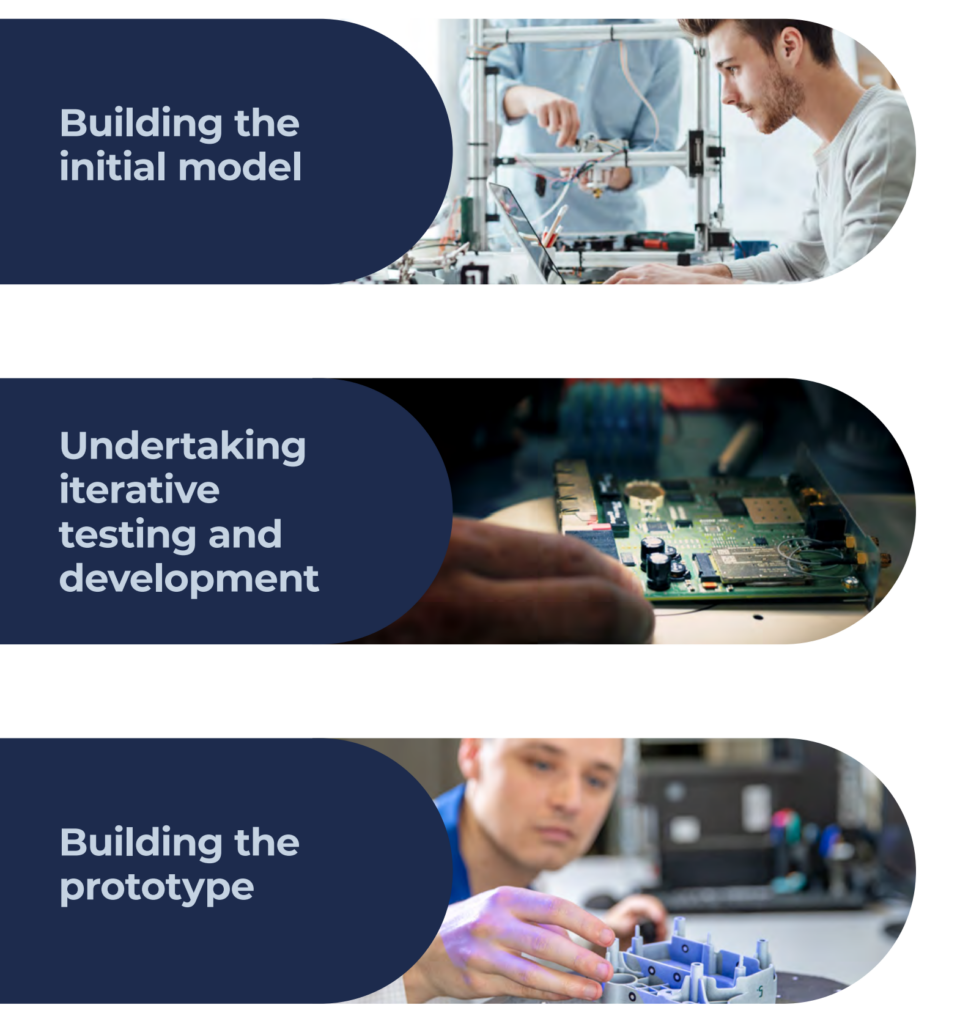
Design
Capturing real-time data
Eseye’s RAPIER approach delivers a physical proof-of-concept (POC) device that gathers and exchanges the data you need. Your prototype device will go through extensive testing to ensure it is performing as expected and is fit for the next stage of production. At this stage you can validate or refine your operational and business models. This first-stage device can assist in raising finance and the support needed to drive your IoT innovation forward.
Refine
Modifying build specifications
Insights gained at the first POC stage inform the final specification for use in mass production of the device. After rigorous testing, any required refinements identified can be applied to the device – whether that’s changing what type of data the sensors collect or refining the design itself. The insights mitigat financial and reputational risk and improve the likelihood of success for the final approved designs.
Deploy
Aligning to operating requirements
Eseye can deliver the full production version of the device. Our service includes:
- Design; including product enclosures, documentation, packaging, and logistics management
- Pilot
- Manufacturing
- Regulatory compliance certification
- Manufacturing test
- Volume manufacture.
Streamlined deployment: Intelligent Cloud Connect
Deployment is about ensuring and managing global connectivity through your IoT project lifecycle.
Intelligent Cloud Connect (ICC) is a plug-in and connect IoT module created jointly by Eseye and Thales to provide out-of-the-box zero-touch secure global connectivity and seamlessly integrate with AWS IoT Core. It is created with our Eseye Telemetry Module (ETM) and zero-touch cloud provisioning solution.
Eseye’s ETM is also available on Quectel’s BG96 module. The BG96 is an LTE Cat M1/Cat NB1/EGPRS module which is compatible with Quectel’s LTE Standard module EG91/EG95, LPWA module BC95-G/BG95, UMTS/HSPA module UG95/UG96, and GSM/GPRS module M95.
Find out more here.
Eseye and Thales
Thales is a global leader in IoT solutions and has been pioneering IoT solutions for 25 years. Thales provides the essential building blocks for securing the exchange of information between devices, machines, or vehicles and the cloud through wireless connectivity.
Eseye and Thales together empower businesses through off-the-shelf connectivity, security services, and IoT device lifecycle management, resulting in trusted data exchange from edge devices up to the cloud while keeping devices protected from cybersecurity threats.
Plug in and connect anywhere in the world
ICC allows you to develop a single IoT product SKU, whatever your industry, that intelligently switches between over 700 mobile networks to provide near 100% global connectivity, while offering seamless data provisioning to the AWS IoT Core.
- Automated zero-touch IoT security certification
- Enhanced security using AWS IoT Device Defender
- Lifecycle device management
- Single pane of glass view for managing global device fleets
- No need to balance bandwidth, data plans, and MNO contracts
- One carrier-agnostic, message-based (MQTT) bill covering all connectivity requirements globally via AWS Marketplace
Form factor considerations
ICC enables you to align the device form factor to the operational requirements of your deployment, with three options:
Module
Terminal
Modem card*
Designed for integration on host PCB, the module is the common choice for higher volume projects. It is necessary for the designer to have board level RF and embedded design skills. Final
applications require type approvals.
The easiest method of integration Pre-approved and ready-to-use IoT system with industrial interfaces, including USB, SPI, I2C, RS232, along with Digital GPIO and Analog inputs. The terminal is a popular choice for adding connectivity to existing hardware.
Applications which require a ‘swappable’ RF module concept. Commonly use the industry-standard connectorized interface. Many industrial motherboards and routers adopt this standard.
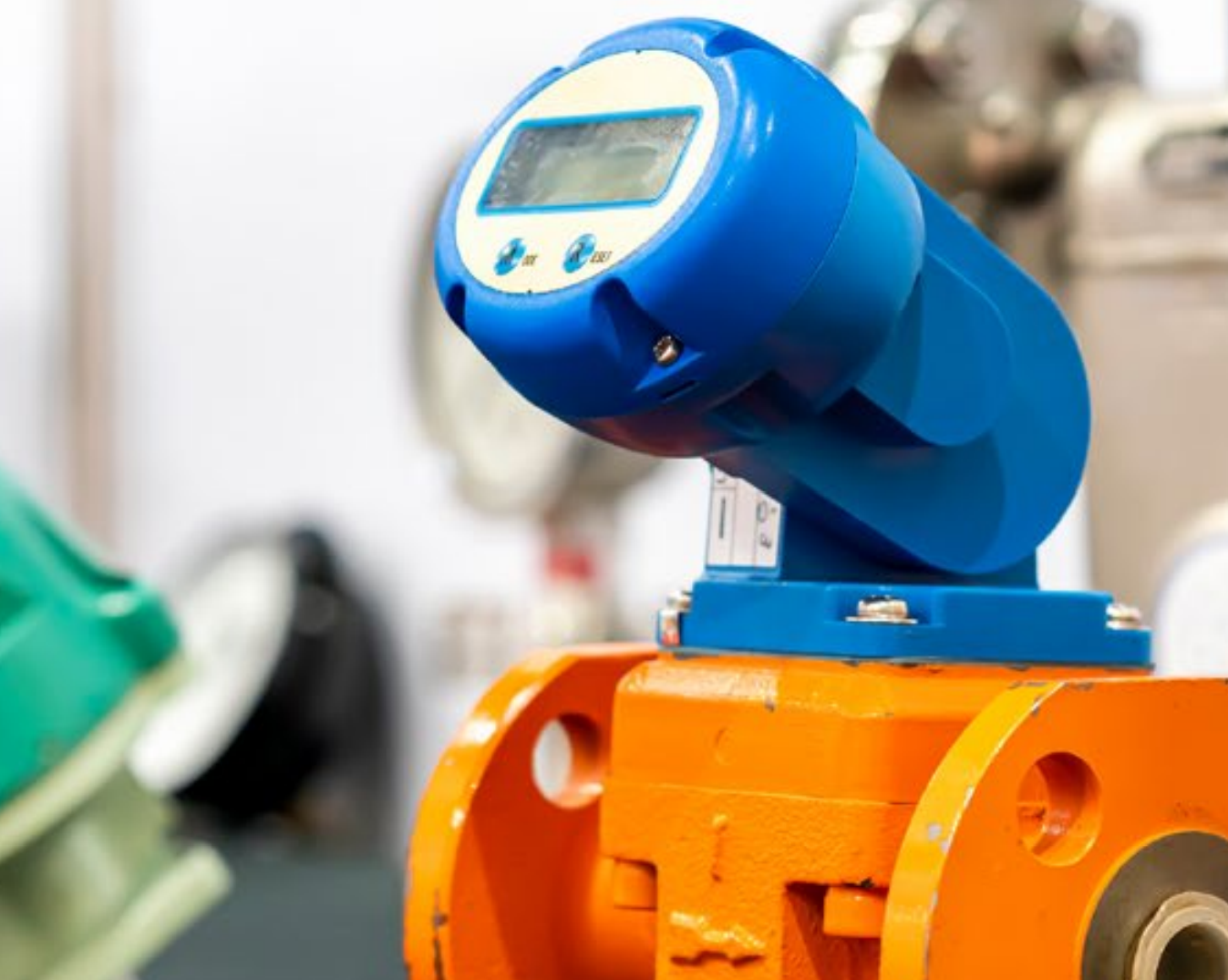
Seamless provisioning
Eseye’s connection to AWS IoT Core securely delivers seamless provisioning, simplified management, and ubiquitous cellular connectivity for any IoT device, through the AWS IoT managed cloud service.
Automated security and certification
Eseye’s unique approach addresses the typical security concerns in deploying, connecting and managing IoT devices. It simplifies and automates the implementation of security and identity certificates for new devices connecting to the network.
Any network, anywhere, all the time: Eseye AnyNet+ eSIM
Build in success, not risk
Eseye specialist IoT hardware comes embedded and pre-certified with our innovative AnyNet+ SIM technology and associated Connectivity Management service.
It is critical to get the SIM right, yet so easy to get it wrong
Roaming SIMs can provide customers with a quick and seemingly simple way to market. But there is a growing unwillingness among mobile network operators to accept permanently roaming connections.
Negative rules and attitudes toward permanent roaming are present across a significant number of countries. Overall, there is a trend indicating that National Regulatory Authorities are still examining the impacts of growing IoT adoption and its implications concerning permanent roaming. Currently, Brazil, Nigeria, and Turkey have banned permanent roaming completely, preventing any deployments at scale through regulatory and/or operator action.
Roaming restrictions can cause long-term challenges to IoT deployments and be more expensive for the end customer in the long run. A roaming SIM builds in risk from the start of your deployment. Long-term reliability is critical to all IoT projects, even those running non-critical applications. Devices that are permanently roaming may be detected and blocked from connecting.
Kaleido Intelligence recently reported that over 80% of mobile network operator roaming agreements do not support Power Saving Mode (PSM) and Extended Discontinuous Reception (eDRX) features on Low Power Wide Area (LPWA) devices. eDRX and PSM are essential for battery life management in IoT devices, and if they cannot be accessed, it will destroy the business case.
This is an untenable scenario; highly impractical for a commercial IoT project and high-risk for any mission- or health-critical IoT-based service.
Presently, Eseye can ensure future-proof deployments and lower total cost of ownership by localizing IoT devices in almost all countries where permanent roaming is either banned by the regulator or prohibited by MNOs themselves.
Eseye eSIM Localisation Capabilities, April 2021
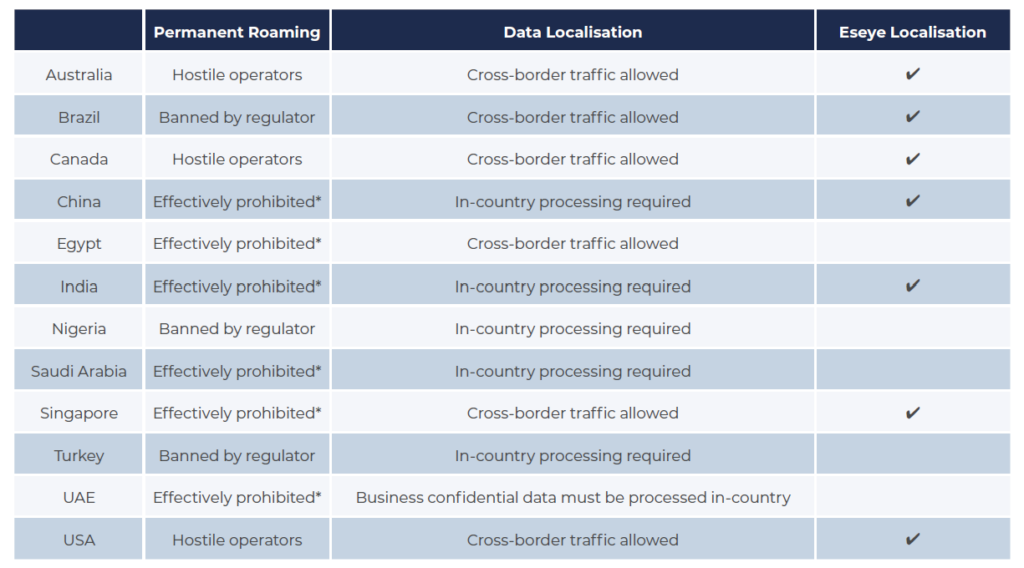
*Any deployments at scale will be prevented through regulatory and/or operator action.
Source: Kaleido Intelligence
Be agile in a mobile world
While the eUICC global standard allows devices to transfer to a new network when problems occur (without physically swapping out and replacing the SIM), a cost issue prevails. Switching network providers is both time-consuming and costly. If the new mobile network fails, your device is disconnected but you are possibly stuck in a long-term contract.
Eseye’s unique multi-IMSI SIM technology was developed in close collaboration with two of the three major SIM card manufacturers. It allows for dynamic and seamless switching between network profiles and is fully eUICC compliant
Connect Anywhere in the World with Complete Assurance and Reliability
Eseye’s AnyNet+ SIM includes multiple Tier 1 MNO multi-IMSI bootstraps and Step2 profiles. Customized algorithms within the SIM card dynamically select the optimal profile to deliver the best service, which can be either pre-loaded to the SIM or downloaded over-the-air post-deployment.
In contrast to standard eSIM hardware—offering only a single bootstrap fallback option—Eseye’s AnyNet+ SIM integrates GSMA-compliant eSIM technology with the ability to use up to 10 bootstraps installed on the SIM. This configuration provides two significant advantages:
- Improved Connectivity on Initial Deployment: Multiple bootstraps can be used to activate the main operator profile, reducing the likelihood of connectivity failure in areas with patchy coverage.
- Enhanced Reliability During Operation: If the active operator profile encounters issues, such as network downtime, one of the multiple onboard bootstraps can be used to switch to another operator, minimizing revenue losses from service outages.
Automated monitoring and management: Connectivity Management Platform (CMP)
When Devices Are in the Field, Critical Moments Can Come in Waves. We’ll Help You Be Prepared and Equipped to Handle Them…
Eseye’s Connectivity Management Platform (CMP) is a unified application designed to provide centralized control over global IoT deployments, simplifying device administration.
The platform offers comprehensive real-time monitoring and full control of your IoT estate’s connectivity, allowing you to:
Connectivity management: Eseye’s CMP enables connectivity customisation with network-level dynamic steering
and switching in line with eUICC or GSMA standards.
Visibility and reporting: You’ll gain real-time visibility on data usage, device uptime, and connectivity
coverage, to optimise performance and remediate if action is required.
Monitoring: The CMP enables you to identify anomalous device behaviour including technical
connection issues.
Analytics/Optimising data value: Leverage IoT device and connectivity data, while also employing APIs, to inform
insights, establish trends, and pinpoint troubleshooting.
Optimising deployment: Making real-time, over-the-air changes to devices that are actively deployed around
the world to ensure connectivity is optimised.
Localisation options: A broad range of MNO direct network interconnects to enable cellular network
localisation and overcome permanent roaming challenges.
Resilient worldwide cellular connectivity: Hera 604 router edge processing hardware
Eseye’s high-speed Hera 604 router is an M2M-grade, fully managed router with AnyNet 3G/4G Ethernet/Wi-Fi connectivity, working seamlessly with our embedded multi-IMSI AnyNet Secure eSIM to provide robust global cellular connectivity. Part of the Hera 600 series, it offers adaptable, compact connectivity solutions for cellular, Wi-Fi, and Ethernet with 3G/4G failover capabilities.
Security
The Hera 604 is designed to provide top-tier protection across your IoT estate:
- Embedded Security: Offers IP filtering, a stateful inspection firewall, NAT/NAPT, and denial of service (DoS) protection.
- Physical Protection: Features tamper-proofing, with Eseye’s AnyNet Secure SIM embedded directly into the Hera 604 router.
- Secure VPN and APN Connection: Suitable for use with private or public cloud services, such as AWS or Azure.
Diagnostics and Maintenance
The Health Monitor application embedded in the Hera 604 continuously monitors connection performance, automatically detecting any issues and dynamically adjusting connectivity preferences to manage seamless failover. Health Monitor settings include:
- General Settings: Configurable options to detect failed system polls on WAN interface restart or router reboot, failed interface tests, ping requests, and DNS requests. Selection of the optimal WAN interface is managed via a dropdown.
- Settings for Each WAN Interface: Provides both editable and read-only configurations for priority, interface, IP address, DNS, and other features, with options to apply overrides for each WAN interface as needed.
.

Overview: Proceed with confidence
Eseye can help from end to end and beyond; with a proven 90-day rapid device development process, followed through with cellular connectivity that offers close to 100% availability through any network, anywhere, and a connectivity management platform to monitor, control, and optimise your deployment.
From the outset of your IoT project, Eseye can provide everything you’ll be looking for in terms of robust connectivity, unrestrained by SIM limitations, MNO performance, or laborious and costly network-to-network switching in an attempt to ensure consistent availability across your IoT estate.
We will accompany you step-by-step through the device design process, with definitive guidance and solutions on protocols, certification, data extraction, cloud integration, analytics, and security.
From idea to realization; concept to connectivity:

.
Unlock seamless IoT connectivity
Partner with Eseye to bring your device to life.

